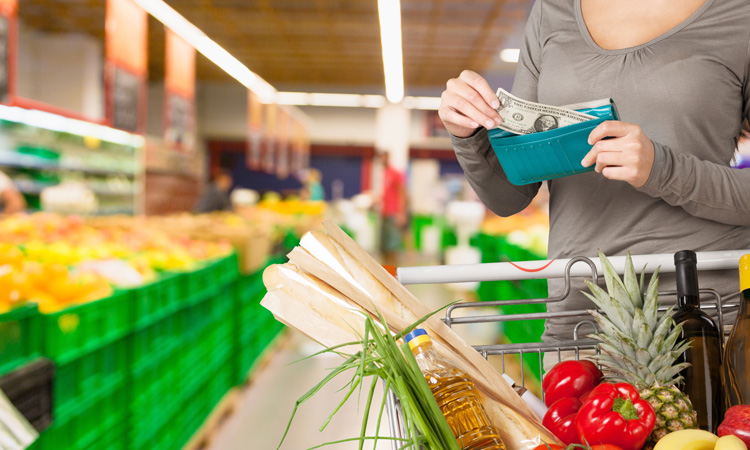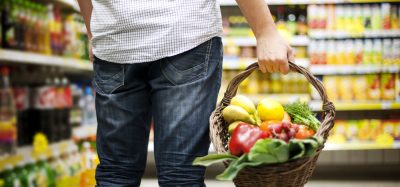Global food prices rise again in August 2020
- Like
- Digg
- Del
- Tumblr
- VKontakte
- Buffer
- Love This
- Odnoklassniki
- Meneame
- Blogger
- Amazon
- Yahoo Mail
- Gmail
- AOL
- Newsvine
- HackerNews
- Evernote
- MySpace
- Mail.ru
- Viadeo
- Line
- Comments
- Yummly
- SMS
- Viber
- Telegram
- Subscribe
- Skype
- Facebook Messenger
- Kakao
- LiveJournal
- Yammer
- Edgar
- Fintel
- Mix
- Instapaper
- Copy Link
Posted: 3 September 2020 | Sam Mehmet (New Food) | 1 comment
The FAO Food Price Index was up two percent from July 2020 due to “generally firmer demand”.


Global food prices rose for the third consecutive month in August, influenced by generally firmer demand and a weaker US dollar, according to a report released by the Food and Agriculture Organization of the United Nations (FAO).
The FAO Food Price Index, which tracks the international prices of the most commonly traded food commodities, averaged 96.1 points in August, up two percent from the previous month and reaching its highest level since February 2020.
The FAO Cereal Price Index rose by 1.9 percent from July, averaging seven percent above its value in August 2019, with coarse grains leading the rise. Sorghum prices rose 8.6 percent – and stood at 33.4 percent above their year-ago level, notably due to strong import demand by China. Maize prices rose 2.2 percent amid concerns that recent crop damages in Iowa would impact supply. International rice prices also rose, underpinned by seasonally tight availabilities and increasing African demand.
The FAO Sugar Price Index rose by 6.7 percent from the previous month, reflecting reduced production prospects due to unfavourable weather conditions in the European Union and Thailand, the world’s second-largest sugar exporter, as well as strong import demand by China.
The FAO Vegetable Oil Price Index increased by 5.9 percent, led by firmer values for palm oil especially, but also soy, sunflower and rapeseed oils. FAO suggested that the moves mainly reflect prospective production slowdowns in leading palm oil producing countries amid firm global import demand.
The FAO Dairy Price Index was virtually unchanged from July, FAO noted, with cheese and whole milk powder quotations declining amid expectations of ample seasonal export availabilities in Oceania, while butter prices rose due to tightening export availabilities in Europe in the wake of the August heat wave reducing milk output.
The FAO Meat Price Index was also almost unchanged since July – although down 8.9 percent from August 2019 – as the effect of lower import demand for bovine, poultry and ovine meats was offset by surging import demand for pigmeat from China.
Cereals
FAO also lowered its forecast for world cereal production in 2020 by 25 million tonnes from a July projection, due largely to expectations of a lower maize output in the US. However, despite this reduction, such an outcome would still represent an all-time high, amounting to 58 million tonnes above the 2019 output, FAO added.
Record maize harvests are forecast for Argentina and Brazil, while global sorghum production is expected to grow by six percent from the previous year. Worldwide rice production in 2020 is also expected to reach a new record of 509 million tonnes.
FAO’s new forecast for world cereal utilisation in 2020/21 stands at 2,764 million tonnes, up two percent on an annualised basis
Global cereal stocks are projected to rise by 1.7 percent to 895.5 million tonnes by close of the 2021 seasons, translating to a world cereal stocks-to-use ratio of 31.8 percent, slightly down from July but still relatively high from a historical perspective.
Buoyed by expected larger shipments of rice and coarse grains, world trade in cereals in 2020/21 is now pegged at 441.4 million tonnes, 1.6 percent above the 2019/20 level.
Related topics
Related organisations
Food and Agriculture Organization of the United Nations (FAO)










No wonder, the price will continue to rise until the lockdown put to the end and all kind of Agribusiness and all commercial activities are started as before!